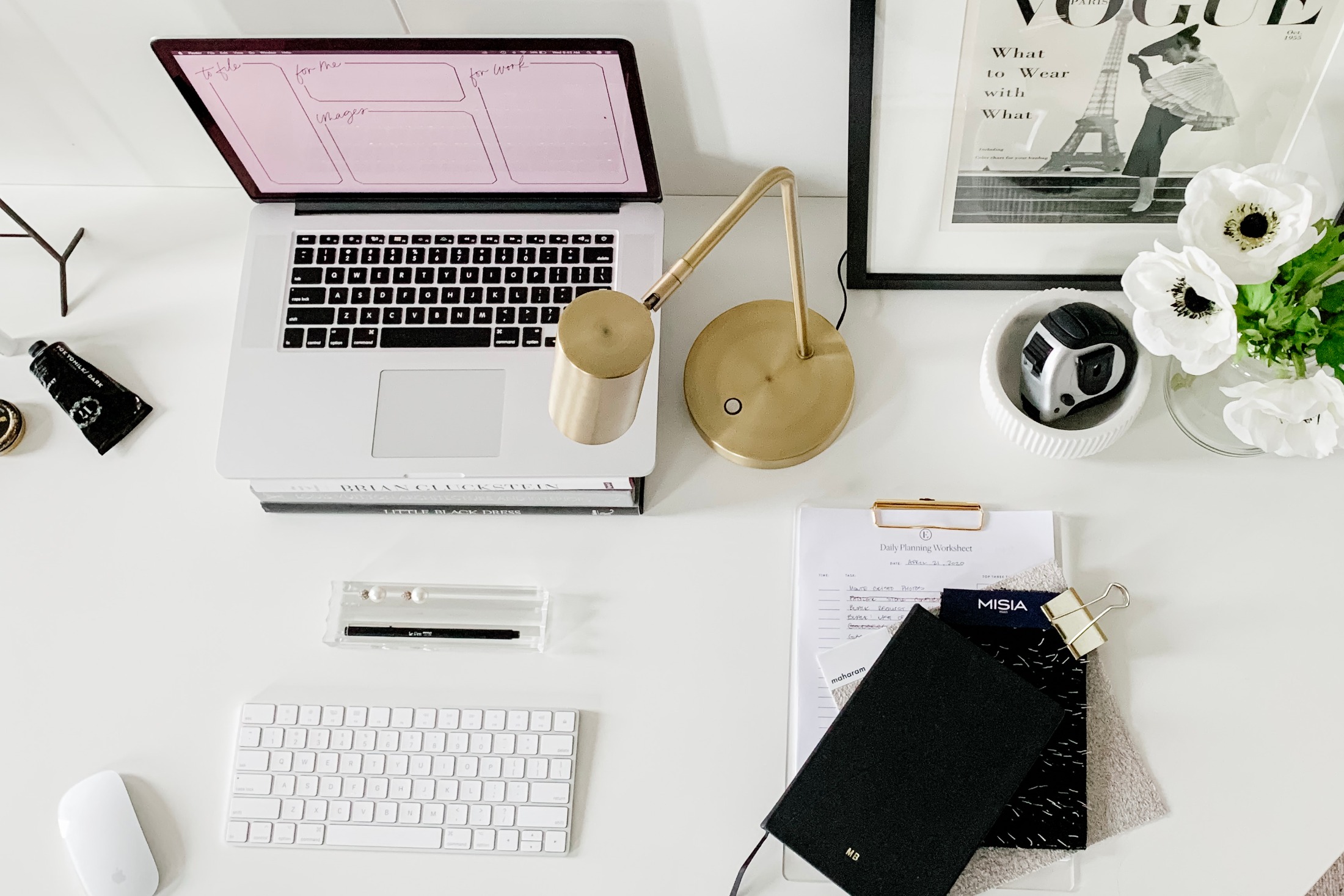For the many Vancouverites now chipping away on proposals from the sofa, or taking Zoom calls at the dining room table, the distinction between working hours and personal time has started to blur. After all, when you work from home, it’s near impossible to step away from the “office.”
But if we’re going to survive these strange quarantine days, our mental well-being is pivotal—so we’re turning to design experts for help. Here, the city’s best interior designers share their tips for creating a space that beautifully fosters work-life balance.
Clear the table. Seriously.
If you’ve had to transform your dining table into your work surface, you’re not alone. But it’s critical at the end of the business day to transform it back to its neutral state. “Putting stuff away really works,” says Annaliesse Kelly of AK Design. Clear out a drawer and dedicate it to housing your laptop and work documents when you’re not on the clock: out of sight, out of mind.
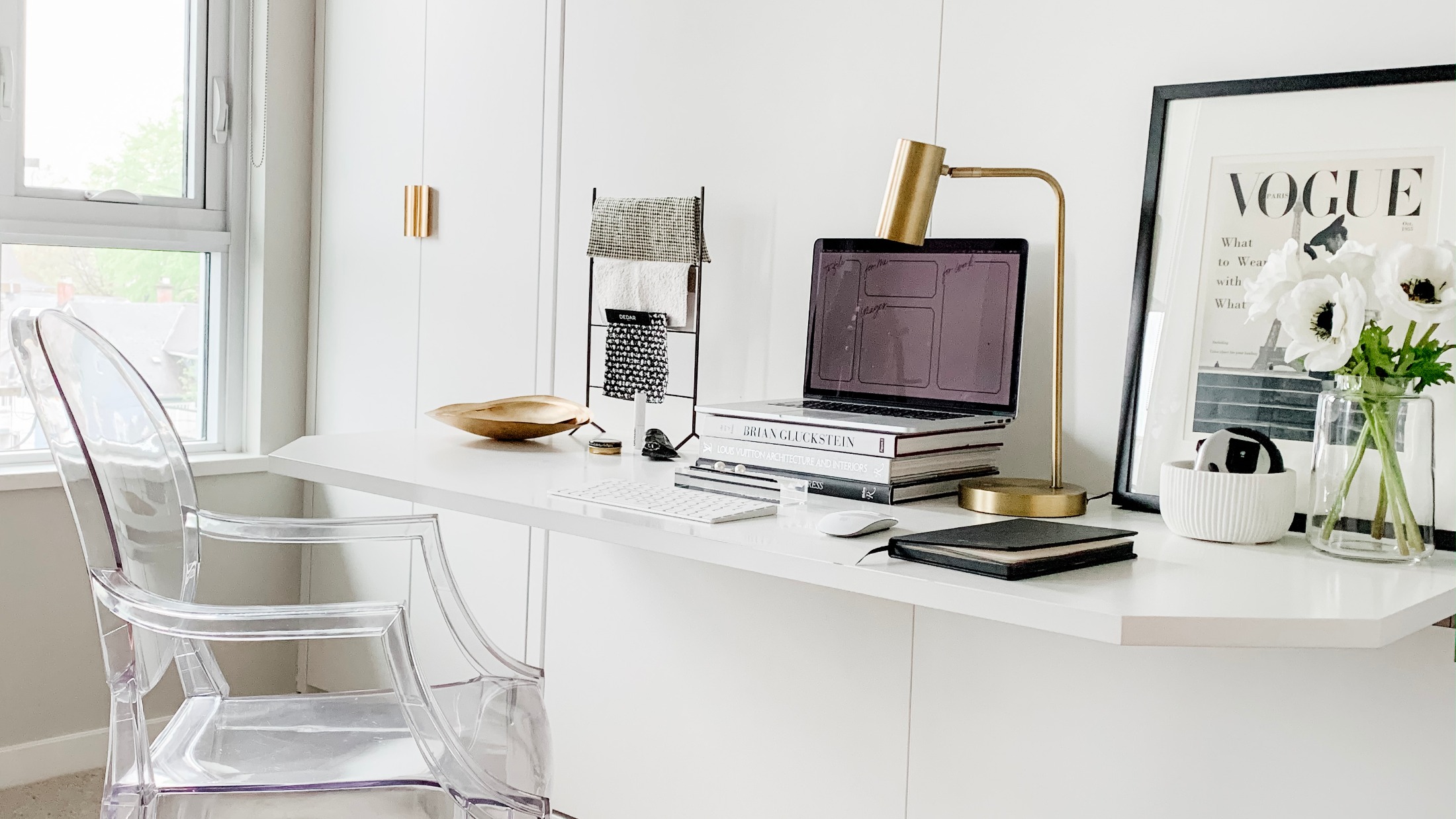
Image courtesy of Megan Baker Interiors.
Or, as designer Megan Baker (Megan Baker Interiors) suggests, invest in a few great baskets. “Work items can cause a lot of stress if you are seeing them when you aren’t supposed to be working,” she says. “You want nice baskets to look at during dinner, rather than two piles of tasks you don’t want to think about until tomorrow.”
Consider function first.
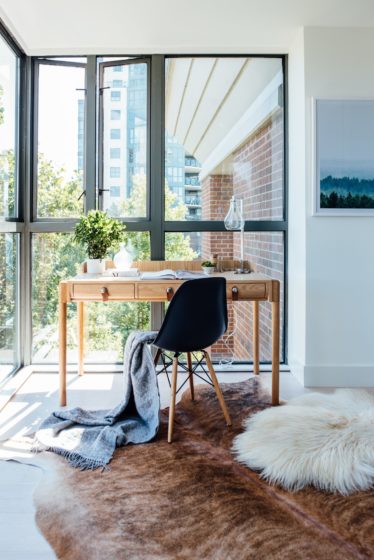
Photo by Julie Row/Kalu Interiors.
Do you need to switch from sitting to standing during the day? Where do you like to put your coffee mug? Aleem Kassam and Phyllis Lui of Kalu Interiors suggest taking a good hard look at how you use the space before you start designing. “Knowing your habits can help you plan more efficiently,” says Lui.
Think about what inconveniences you or interrupts your workflow, and address it from the get go—a pretty cup of pens so writing tools are always on hand, or a drawer to stash a spare phone charger in.
The depth and length of your work surface are important to consider for optimum functionality, too, designer Anna Dhillon (Anna Dhillon Design) points out: “It should be a minimum of 24 inches deep and 48 inches long; the biggest mistake people make is not allowing for a large enough workspace.”
Invest in a great chair.
Even if you have to work at the dining table, it’s critical to have a comfortable chair. “Dining chairs aren’t always the right height for office work,” warn Jamie Hamilton and Greer Nelson of Oliver Simon Design. “We suggest an adjustable desk chair to provide maximum comfort.”
Ben Leavitt (PlaidFox Studio) agrees. “A proper supportive office chair—though they are often not aesthetically the chair of your dreams—will transform your work day. Boring, I know, but it’s the truth!” It’s not only good for your posture: sitting down each morning in a designated work chair will help alert your brain that it’s time to focus.
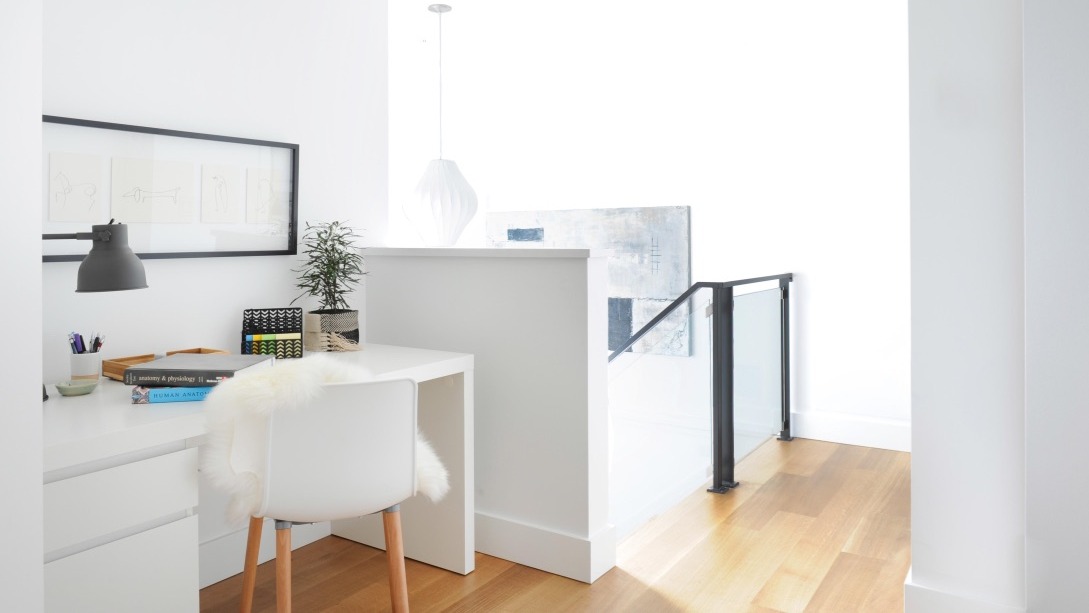
Photo by Tracy Ayton/Oliver Simon Design.
Layer your lighting.
To transition between the workday and personal time, Baker says it’s key to change up the lighting. “Especially if you need to make do with working at the dining table, or a temporary desk set up in your living room, it’s important to layer your lighting so you can have two different feelings for day and night,” she says. Have a task light on your work surface and use overhead, ambient lighting to provide what Baker calls an “even, awake-feeling light.” At 5 p.m., turn off those work lights and switch to floor lamps, table lamps, and candles to create a relaxing mood.
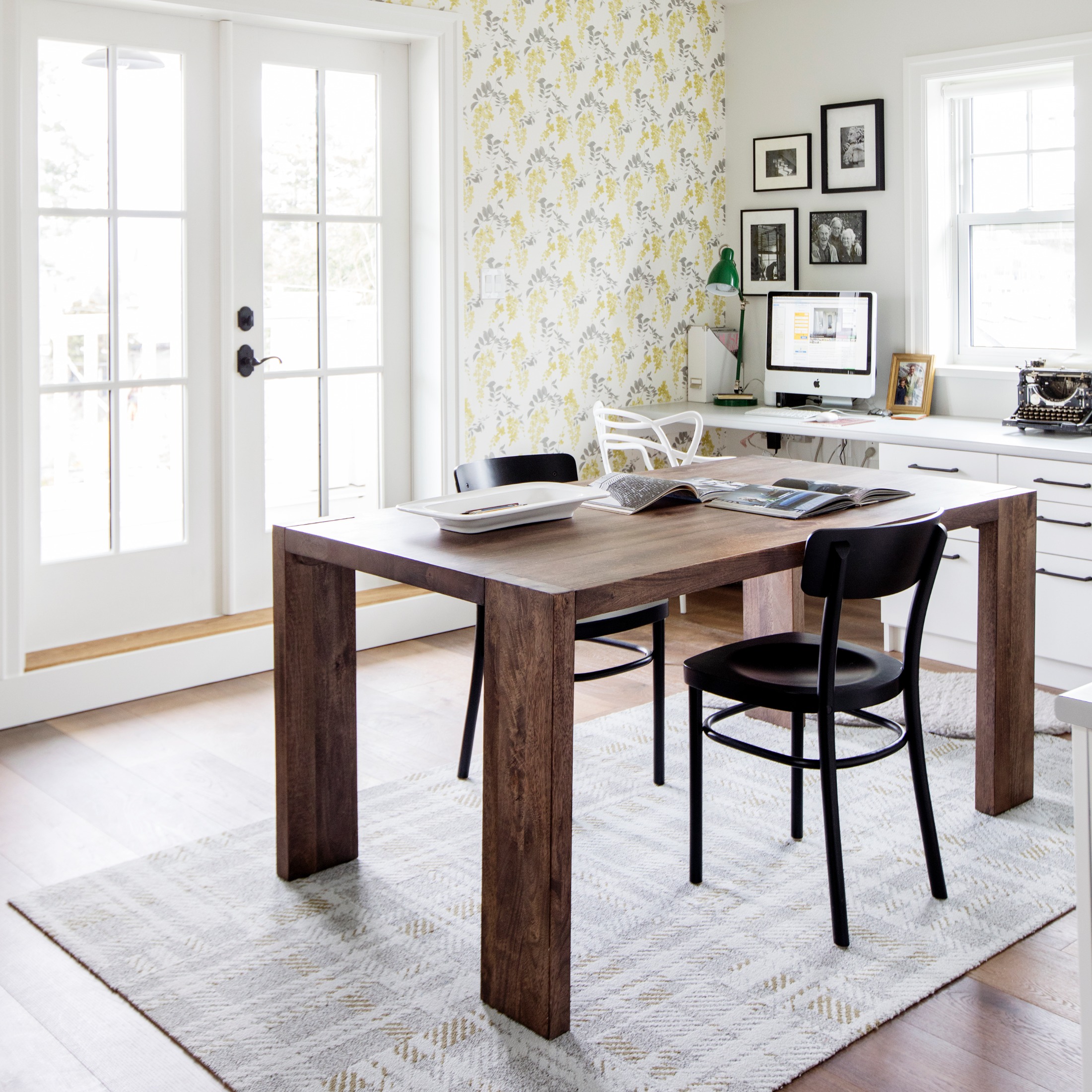
Photo by Janis Nicolay/Rudy Winston Design.
Sound can be a powerful transitional tool, too. “I always have music playing in the background when I’m working, typically classical or jazz—nothing with words—so my brain is free to think on the task at hand,” says Francesca Albertazzi of Rudy Winston Design. Create an after-work playlist (something to blast while you’re tucking your stuff into that designated drawer, perhaps?) to similarly trigger your off-the-clock mindset.
Create a new routine.
Your routine may have been disrupted, but that doesn’t mean you can’t make a new one. Leavitt recommends working from the same place every day. “Although working from home allows the flexibility to work from the comfort of your sofa, you want to avoid a lack of structure, which can breed inefficiency,” he notes. “Whether it’s permanent or temporary, make sure your workspace feels like a place you can focus while still being creative.”
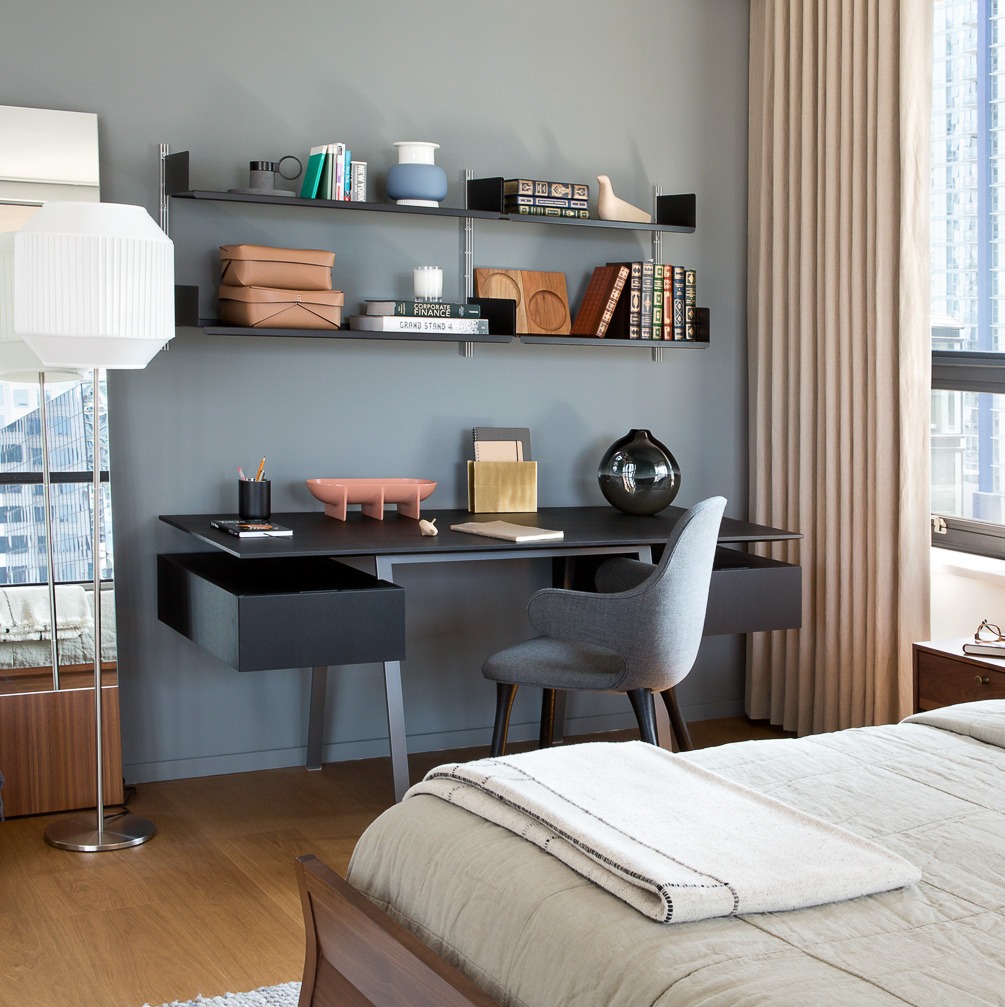
Photo by Ema Peter/Falken Reynolds.
To that end, Chad Falkenberg of Falken Reynolds Interiors even suggests taking a moment each day to create a work area that’s different from your home space: “That could be as simple as pushing a dining table up against a wall during the work hours.” Putting things back to home mode at the end of the day can become part of that decompressing ritual. “Once everything is tucked away, or even covered up, going for a walk, getting the groceries, even just taking out the recycling gives a chance to leave and come back to home as just home.”
Read more in our Design section.

